On the evening of October 18th, I was the recipient of the 2022 Pollinator Advocate Award USA from Pollinator Partnership’s North American Pollinator Protection Campaign. https://www.pollinator.org/nappc/awards The ceremony took place at the Botanical Gardens Atrium in Washington, D.C. I had three minutes for my acceptance speech. How does one put fifty years of a life guided by butterfly spirit into 3 minutes? I tried, with speech below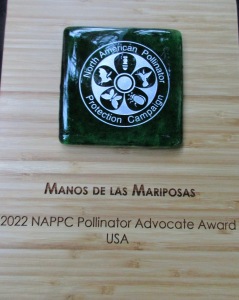
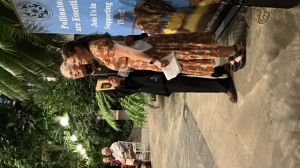 .
.
I accepted the award from Kelly Bills, Executive Director of The Pollinator Partnership’s North American Pollinator Protection Campaign on October 18th, 2022or at the Botanical Gardens Atrium in Washington D.C.
Thank you for this award. I am honored.
Fifty years ago, my journey with monarchs began. From the first caterpillar I found quite by accident, I started raising, tagging, and releasing hundreds of monarchs.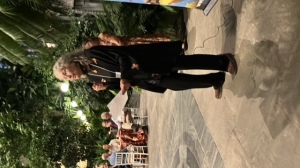
Five years later, in early 1977, I set off for Mexico in search of the mountains where monarchs spend the winter, unknown at the time except for one scientist who wasn’t telling. Two months and many adventures later, I was guided to the mountain Cerro Pelon in Michoacan where I encountered about 100 million monarchs mating on the first day of spring. My literal search morphed into a spiritual journey which led me to becoming a lifelong environmental activist.
In 1978 and 1979, I was given permission to camp and live among the monarchs, the only person allowed to do so. It was there that I tagged the monarchs for the Insect Migration Association to study their northward migration. Living among the monarchs was a profound experience for which I was deeply grateful. In gratitude for the honor and privilege of this experience I vowed while among the monarchs to do everything I could to protect them, their habitats, and to help the impoverished mountain people.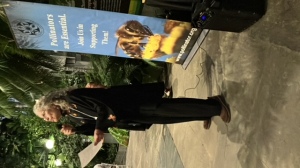
I have endeavored to honor my sacred vow from then until now in a myriad of ways. I worked with a reforestation project in Mexico for 15 years helping to facilitate the planting of over 6 million trees in and around the mountains where monarchs overwinter. My Spirit of Butterflies tour was the recipient of the Smithsonian 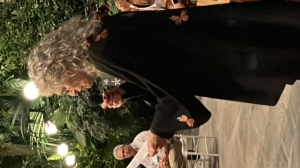 Conservation Award in 2001.
Conservation Award in 2001.
I have lectured all over the U.S. educating, informing, and inspiring others to take care of the little piece of earth upon which they stand. I have worked with schools and communities to create public and private butterfly/pollinator gardens believing we can save our planet one garden at a time.
I believe that the monarchs are inspiring us to save them and in the course of doing so, are guiding us to help save ourselves.
My path has been a long and winding one. I hope you will visit my website: www.spiritofbutterflies.com to find out a bit more. I thank the Pollinator Partnership for this honor. We all have a lot of work yet to do.
During the informative, productive, and interesting conference, I gave a short three minute presentation, Where Have All the Monarchs Gone?
October 20, 2022: We have been discussing the many factors and challenges the butterflies face in all stages of their lives. I’d like to further address how climate change has drastically affected them.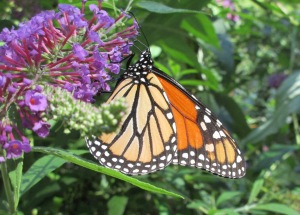
I mentioned on Tuesday that I encountered 100 million monarchs making on the 1st day os spring in 1977 in Mexico. Over the decades, I have witnessed the population fluctuating yearly, sometimes 30 million, 50 million, 100 million or more. After mating in March, the monarchs used to begin their long journey north in mid-April.
In the 2000’s that pattern started to change. In 2014 I went to celebrate the 100th birthday of a dear friend in the mountains and visited the monarchs. I was devastated to find 3 million monarchs on one acre rather than millions covering 60 acres. They now start their journey north a month early, mating in February, by mid-March they are on the wing, each female laden with 400 eggs.
Timing is everything for everything.Will the milkweeds be up and ready to receive their eggs? Will there be enough flowers to sustain them?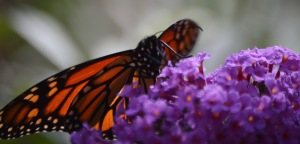
The monarchs emerging in Autumn would begin their long journey south in September. Now they linger longer, some well into October. In 2012, a large, healthy monarch emerged at the beginning of November. It was too cold for her to fly and there weren’t enough flowers to fuel her journey.
I inquired and S.W.A. answered and on Nov. 5th flew me and my butterfly from Albany N.Y. to San Antonio Texas so she could complete her migration. We had a ceremony at S.A.B.G.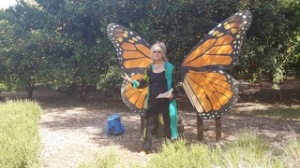
She was not the last one. A couple of years later, S.W.A. flew me and about 60 chrysalids and butterflies to S.A. at the end of October.
In the early winter of 2002 there was an unusual severe snowstorm in the mountains of Mexico. I had seen mortality among the monarchs before but nothing like this.
I stood knee deep in snow covered dead monarchs weeping my heart out but then slowly some starting flying straight up, rising from the heat of decomposing ones that was reviving them. Resilience. Death. Rebirth. Hope, some of the main attributes we have ascribed to butterflies that I share in my book, The Spirit of Butterflies: Myth,Magic & Art.
Are we at the edge of putting so much pressure on monarchs that the precipice of extinction is too near?
Positive actions are what keep me going.
There is far greater awareness now of the perils to pollinators thanks to organizations like NAPPC, among other entities, groups and individuals. This is what gives me hope for the future.
Each one, teach one.
I am grateful for and thank all the people dedicated to the cause. Once pollinators enter your heart, there is no turning back, dedicated forever.
Catskill Mountainkeeper honored me with the title Pollinator Hero in July 2022
“Celebrating a Pollinator Hero: Last week was National Pollinator Week, but here at Mountainkeeper, every day is critical in our work to protect bees and other pollinators from a myriad of threats ranging from toxic neonicotinoid insecticides to habitat loss. Protecting pollinators is no small task, and we are proud to work with many amazing people and partners who help make a difference in our region. This week, we’re honoring Maraleen Manos-Jones, a Monarch Butterfly expert whose tireless advocacy has made a profound difference for pollinators worldwide.”

